You’ve probably heard that the deadlift is one of the best muscle- and strength-building exercises you can do.
True.
You may have also heard that of all the deadlift variations the “conventional deadlift” is the best of the bunch, and that you have to deadlift conventionally to get the full benefits of the exercise.
False.
While the conventional deadlift allows you to lift more weight than most other types of deadlifts, it’s not necessarily ideal for everyone, especially if it aggravates your joints or you don’t enjoy it.
But as you’ll learn in this article, there’s nothing extraordinary about the conventional deadlift.
Yes, it’s a great exercise and worth doing if you like it, but you can gain muscle and strength just as effectively with other deadlift variations.
Which deadlift variations specifically? In my experience of working with thousands of people, these types of deadlifts are the best:
- Conventional deadlift
- Sumo deadlift
- Trap-bar deadlift
- Romanian deadlift
- Stiff-leg deadlift
- Deficit deadlift
- Rack pull (block deadlift)
- Pause deadlift
- Snatch-grip deadlift
- Single-leg dumbbell Romanian deadlift
- Dumbbell deadlift
- Dumbbell Romanian deadlift
- Kettlebell deadlift
- Suitcase deadlift
- Reeves deadlift
In this article, you’ll learn why these are the 15 best deadlift variations, how to do them correctly, and more.
Key Takeaways
- You don’t need to rely solely on the conventional deadlift—several deadlift variations can build muscle and strength just as effectively.
- Each type of deadlift trains your body slightly differently and can help achieve different goals.
- The best deadlift for you depends on what you want to achieve, the equipment you have available, and your personal preferences.
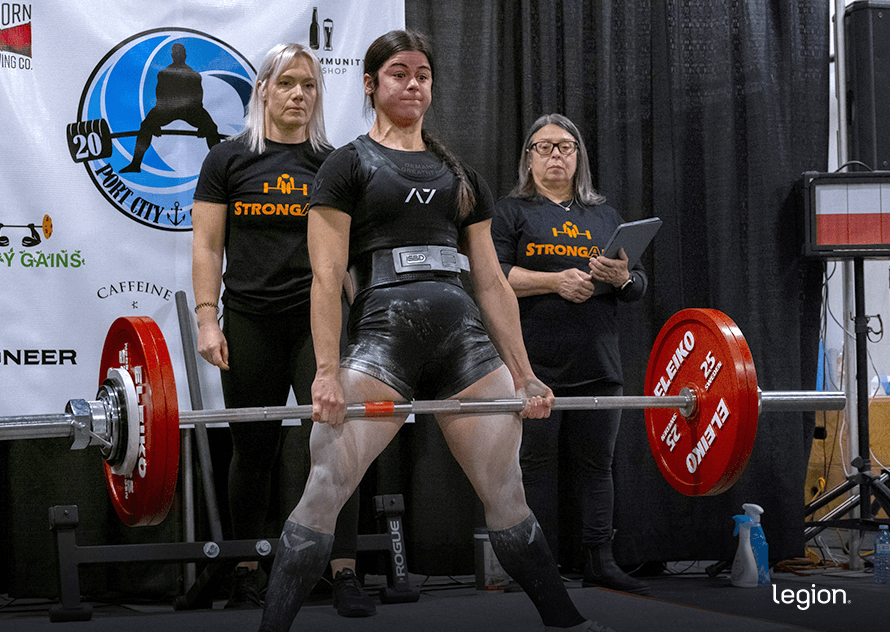
The 15 Best Deadlift Variations
The following 15 deadlift variations each offer unique benefits, so no matter how you like to train, what equipment you have available, or what limitations you have physically, you’ll find one to fit perfectly into your deadlift routine.
We’ll break down why each type of deadlift is effective, what sets it apart from other deadlift variations, and how to perform it to maximize muscle and strength gains safely.
1. Conventional Deadlift
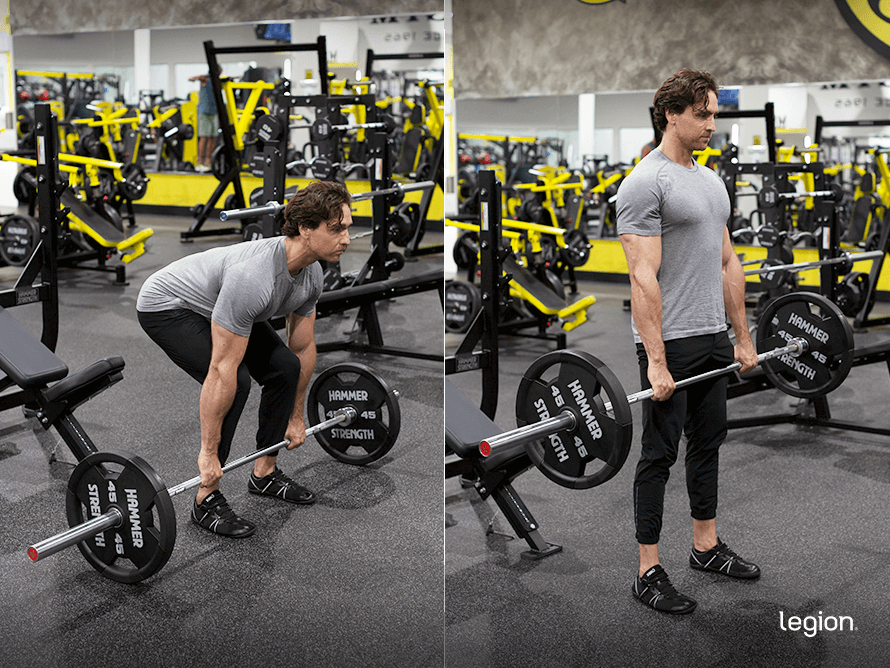

Why: Many people think of the conventional deadlift as the king of deadlift variations because it’s easy to learn, requires no specialist deadlift bar, and trains almost every muscle in your posterior chain (the muscles on the back of your body), including your lats, traps, lower back, glutes, hamstrings, and calves.
What’s more, the conventional deadlift also trains muscles on the front of your body, such as your quads, forearms, core, and shoulders, boosts full-body strength and power, improves athletics performance, and may even help relieve lower back pain.
How to:
- Place your feet slightly narrower than shoulder-width, with toes pointed out.
- Position a barbell about an inch from your shins over your midfoot.
- Take a deep belly breath, and grip the bar just outside your shins with palms facing you.
- Flatten your back, then drive upward and slightly back by pushing through your heels until upright.
- Reverse the movement and return to the starting position.
READ MORE: How to Deadlift with Proper Technique
2. Sumo Deadlift
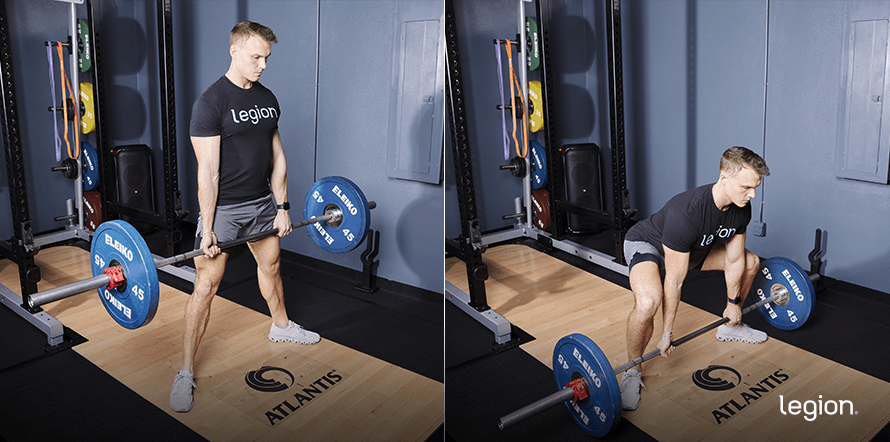

Why: The sumo deadlift has you take a wider-than-shoulder-width stance and point your toes outward, which places your hips closer to the bar and your back in a more upright position than in the traditional deadlift.
Despite these differences in form, studies show that the sumo and conventional deadlift train basically the same muscles to almost the same degree. The only minor difference is that the sumo deadlift trains your quads slightly more, while the conventional deadlift emphasizes your back muscles.
Thus, the sumo deadlift is an excellent type of deadlift for anyone who wants to focus on developing their legs or take some of the stress off of their lower back.
How to:
- Position your feet 1.5-to-2 times shoulder-width with your toes turned out, and place a barbell about an inch from your shins over your midfoot.
- Keep your back straight and drop your butt by bending your knees.
- Grip the bar with a shoulder-width grip and your palms facing you.
- Take a deep breath and stand up, dragging the bar up your shins.
- Reverse the movement and return to the starting position.
READ MORE: The Definitive Guide to the Sumo Deadlift
3. Trap-Bar Deadlift
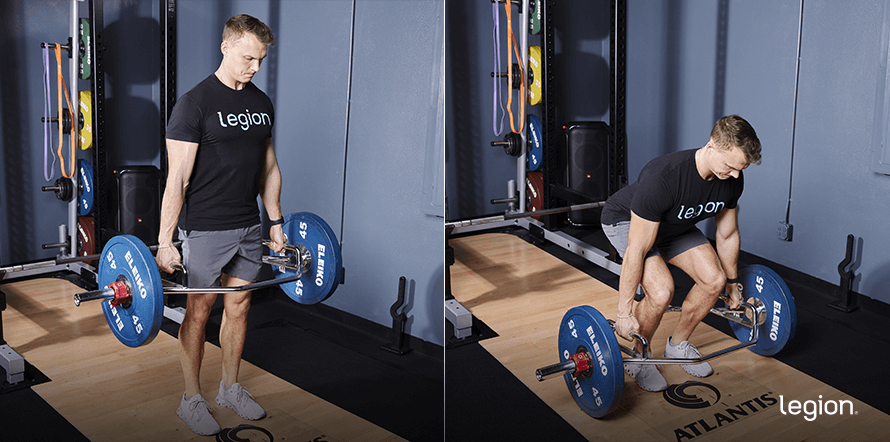

Why: The trap-bar deadlift (or “hex-bar deadlift”) is the same as the conventional deadlift, except it’s performed with a trap bar. There are two key differences between the conventional deadlift and the trap-bar deadlift:
- The conventional deadlift emphasizes the lower back and hamstrings, and the trap-bar deadlift emphasizes the quads.
- You can pull trap bars faster than barbells, which means trap-bar deadlifts are better if you want to train your muscles to generate power.
For most people, the conventional deadlift and trap-bar deadlift are interchangeable. However, if you’re an athlete who needs to generate force (power) rapidly or if you’re training around a back injury, the trap-bar deadlift may be a better deadlift variant for you.
How to:
- Position your feet shoulder-width apart in the center of the trap bar.
- Hinge at your hips, slightly arch your lower back, and grip the handles.
- Push through your heels to drive your body upward and slightly back.
- Reverse the movement and return and the starting position.
READ MORE: How to Trap-Bar Deadlift with Proper Form (with a Free 12-Week Training Plan!)
4. Romanian Deadlift
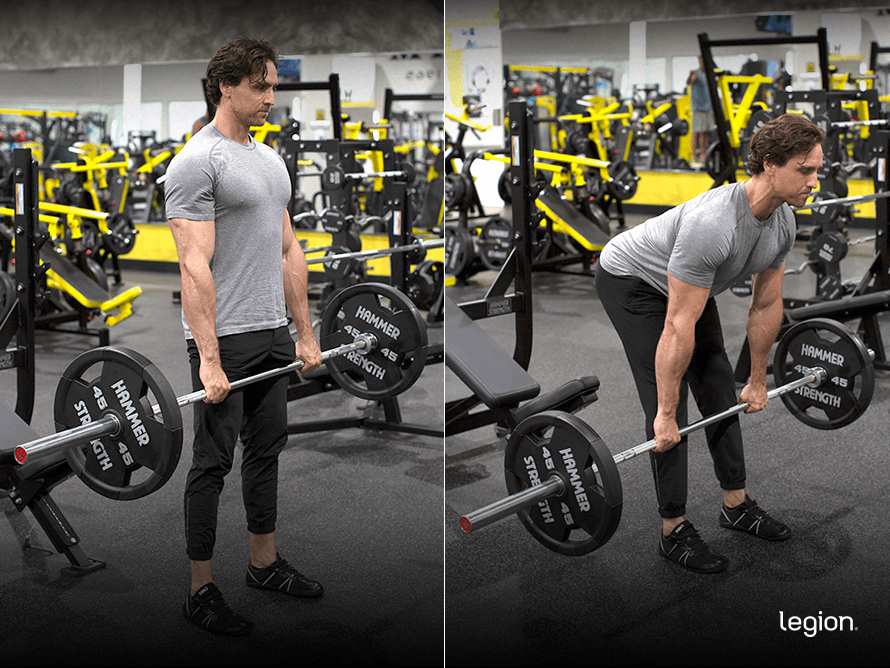

Why: The Romanian deadlift (RDL) trains the posterior chain in a very similar way to the conventional deadlift. However, because of the difference in form, it emphasizes your hamstrings rather than your back and doesn’t train your quads much at all.
Of all the different variations of deadlifts, the Romanian deadlift is one of the least fatiguing, so you can do it more often without wearing yourself to a frazzle. This is why it’s often best to program the Romanian deadlift after another fatiguing lower-body exercise, like the squat, on a day you aren’t doing another type of deadlift (this allows you to train all of your “deadlift muscles” at least twice per week).
How to:
- Stand holding a barbell with a shoulder-width overhand grip (palms facing you).
- Hinge at your hips, keeping your back flat, and lower the bar in a straight line, letting your hips move backward.
- When you feel a stretch in your hamstrings, bend your knees slightly and keep lowering the barbell until your back begins to round.
- Reverse the movement and return to the starting position.
READ MORE: The Definitive Guide to the Romanian Deadlift (and the Best Variations!)
5. Stiff-Leg Deadlift
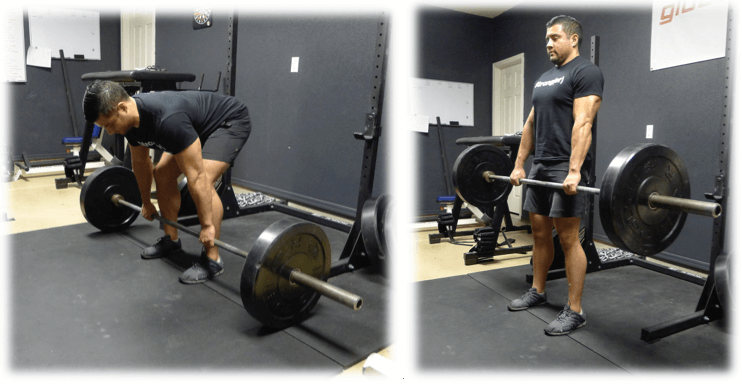

Why: The stiff-leg deadlift is almost identical to the Romanian deadlift, except the bar starts and finishes each rep on the floor.
Research shows that the stiff-leg deadlift is a good deadlift variation for glute, hamstrings, and lower back development because it has a long range of motion and trains the muscles on the back of your legs in a stretched position, which is generally better for muscle growth.
However, most people can’t lift as much weight using the stiff-leg deadlift as they can with other types of deadlifts, it can be uncomfortable if you don’t have good flexibility or have lower back issues, and it can be difficult to learn.
This is why most people prefer other deadlift variations, such as the Romanian deadlift, to the stiff-leg deadlift.
How to:
- Stand holding a barbell with a shoulder-width overhand grip.
- Hinge at your hips, keeping your back flat, and lower the bar in a straight line while keeping your legs almost completely straight.
- Once the plates touch the floor, reverse the movement and return to the starting position.
READ MORE: How to Do Stiff-Leg Deadlifts: Form, Muscles Worked & More
6. Deficit Deadlift
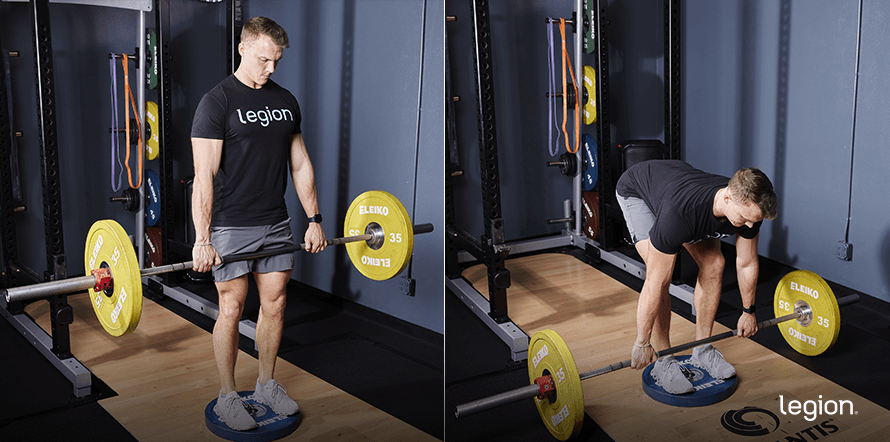

Why: The deficit deadlift is a challenging progression of the conventional deadlift performed with your feet elevated 2-to-3 inches on a weight plate or platform.
The increased range of motion at the bottom of each rep forces your posterior chain to work harder through what’s typically the most challenging portion of a deadlift.
By strengthening your body in this position, you generally find your conventional deadlift numbers increase when you return to pulling from the floor.
However, this is an advanced training “tool” best suited to those focused on maximizing deadlift performance. For beginners or those who train primarily for muscle growth, there are more appropriate deadlift variations to choose from.
How to:
- Stand on a weight plate and place your feet slightly narrower than shoulder-width apart with toes pointed out.
- Position a barbell about an inch from your shins over your midfoot.
- Take a deep belly breath, and grip the bar just outside your shins with palms facing you.
- Flatten your back, then drive upward and slightly back by pushing through your heels until upright.
- Reverse the movement and return to the starting position.
READ MORE: How to Do the Deficit Deadlift to Boost Pulling Strength
7. Rack Pull (Block Deadlift)


Why: The rack pull is a similar type of deadlift to the conventional deadlift, except you begin with the bar resting on the safety arms of a squat rack at about knee height.
Because the bar starts from an elevated position, rack pulls have a much shorter range of motion than the conventional deadlift, which means you can rack pull more weight than you can deadlift.
You can use rack pulls in a couple of ways:
- To supplement your conventional deadlifts: Rack pulling in addition to deadlifting allows you to train similar muscles without the strain of deadlifting twice a week.
- To replace conventional deadlifts: Rack pulls are a smart alternative if you’re working around an injury that conventional deadlifts aggravate.
How to:
- Place a barbell on the squat rack’s safety arms at knee height or a bit lower.
- Position your midfoot under the bar, feet slightly narrower than shoulder-width, with toes slightly out.
- Bend over and grab the bar with an overhand grip just outside your shins.
- Flatten your back and push through your heels to stand up straight.
- Reverse the movement and return to the start.
READ MORE: Rack Pulls: Benefits, Form & Variations
8. Pause Deadlift
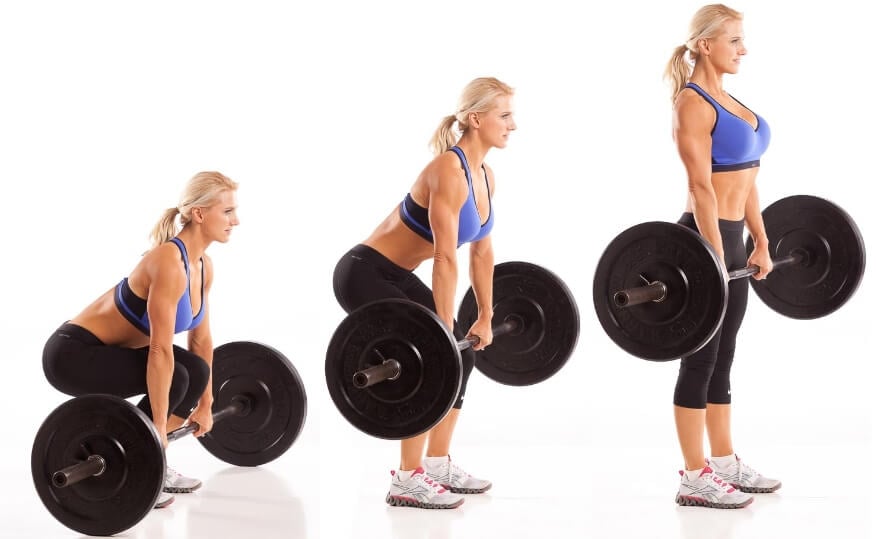

Why: The pause deadlift is a type of deadlift where you pause for 1-to-2 seconds when the bar is somewhere between mid-shin and knee height. It’s useful because many people fail the deadlift in the “second phase” of the exercise, as the bar travels between your mid-shin and knee.
Pausing as you lift the weight trains your muscles to become stronger in this position, which makes it less likely that you’ll fail in the mid portion of the exercise and should increase your performance when you go back to regular deadlifting.
Like the deficit deadlift, however, the pause deadlift isn’t necessary for most weightlifters, especially beginners. Unless you’re a competitive weightlifter or your main focus is improving your deadlift performance, you probably don’t need to include the pause deadlift in your routine.
How to:
- Place your feet slightly narrower than shoulder-width, with toes pointed out.
- Position a barbell about an inch from your shins over your midfoot.
- Take a deep belly breath, and grip the bar just outside your shins with palms facing you.
- Flatten your back, then drive upward and slightly back by pushing through your heels.
- When the bar is between mid-shin and knee height, pause for 1-to-2 seconds.
- Continue pulling until you’re upright.
- Reverse the movement without pausing and return to the starting position.
9. Snatch-Grip Deadlift
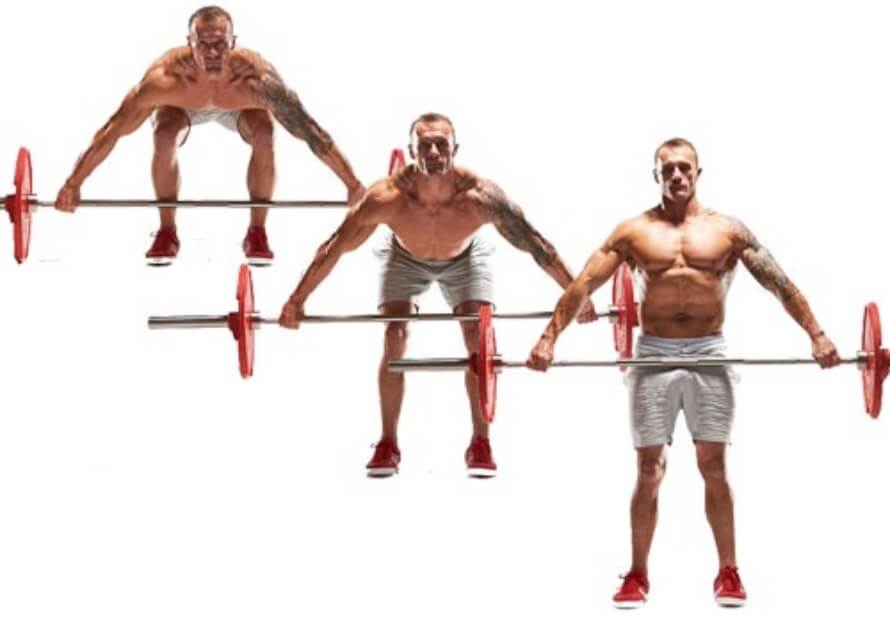

Why: The snatch-grip deadlift is a type of deadlift performed with a “snatch grip”—a wide grip most commonly used in Olympic weightlifting.
(To find the perfect width of a snatch grip for you, stand upright and grip a barbell at a width that places it in your hip crease while your arms are straight.)
By gripping the bar with a snatch grip, you increase . . .
- The distance the bar has to travel to complete a rep, which means your legs have to work harder than they do in the conventional deadlift
- The amount of work your forearm and back muscles have to do, which is why many people use snatch-grip deadlift variations for back training
However, you can lift far less weight with the snatch-grip deadlift than you can with other deadlift variations, and many people don’t have enough flexibility in their ankles, knees, and hips to get into the correct starting position.
That’s why I recommend using the snatch-grip deadlift as an “accessory exercise” to improve your back strength and deadlift performance, but not as the main deadlift variation in your program.
How to:
- Place your feet slightly narrower than shoulder-width, with toes pointed out.
- Position a barbell about an inch from your shins over your midfoot.
- Take a deep belly breath, and grip the bar with a snatch grip and your palms facing you.
- Flatten your back, then drive upward and slightly back by pushing through your heels until upright.
- Reverse the movement and return to the starting position.
10. Single-Leg Dumbbell Romanian Deadlift
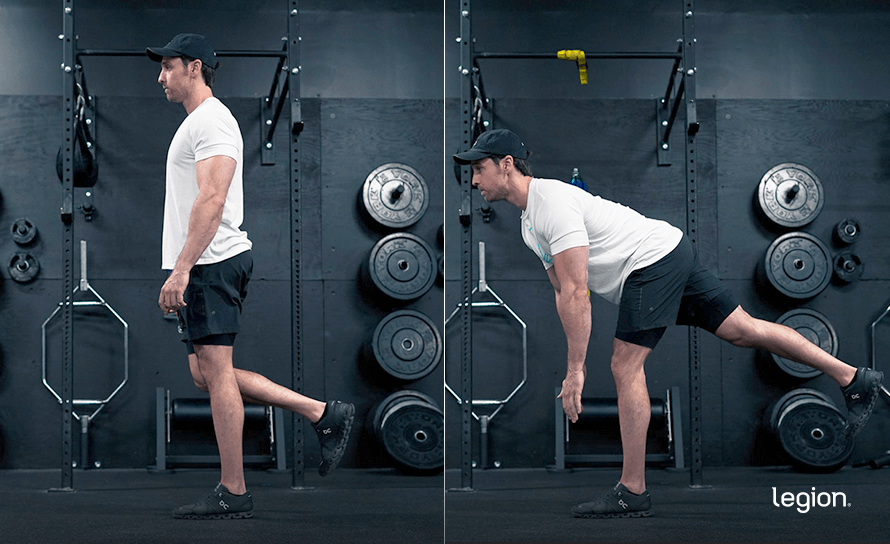

Why: The main benefits of the single-leg dumbbell Romanian deadlift are that it has a longer range of motion than the regular Romanian deadlift, which is generally better for muscle growth. It also trains each side of your body independently, which means it’s useful for finding and fixing muscle imbalances.
The downside is that you can’t use nearly as much weight as you can with the regular Romanian deadlift, and maintaining your balance becomes harder as you get stronger.
This is why I recommend you stick to the traditional Romanian deadlift, and only use single-leg deadlift variations when you don’t have access to a barbell or heavy dumbbells (when traveling or training at home, for example).
How to:
- Stand with a dumbbell in your left hand in front of your left thigh.
- Lower the weight toward the floor, keeping your left leg mostly straight as your hips move back and extending your right leg behind you.
- When you feel a stretch in your left hamstring, bend your left knee slightly to continue lowering the weight until your back is about to round.
- Reverse the movement and return to the starting position.
- Complete the desired reps, then switch sides and repeat.
11. Dumbbell Deadlift
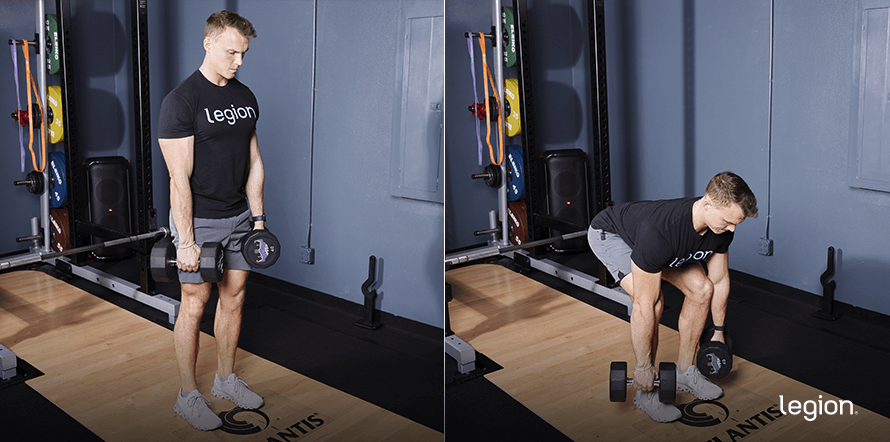

Why: The dumbbell deadlift is performed like the conventional barbell deadlift, except you use a pair of dumbbells instead of a barbell.
The biggest downside of deadlift variations with dumbbells is that they limit the amount of weight you can pull. What’s more, because dumbbells move independently, it can be difficult to lift them in a straight vertical line during each rep.
That said, dumbbell deadlifts are an excellent introduction to deadlifting for beginners who don’t have the strength to deadlift a barbell yet. They also require much less equipment, so they’re a solid option for people who train at home.
How to:
- Stand upright holding a dumbbell in each hand, palms facing your thighs.
- With your arms straight and dumbbells below your shoulders, hinge at the hips, bend your knees, and arch your lower back slightly.
- Bend your knees a bit more as the dumbbells pass them, lowering until they’re 6-to-8 inches from the floor.
- Reverse the movement and return to the starting position.
12. Dumbbell Romanian Deadlift
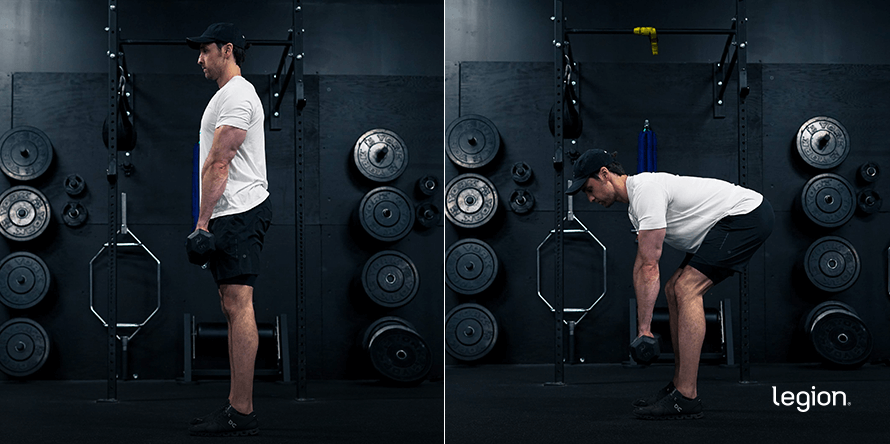

Why: Dumbbell Romanian deadlifts are very similar to the barbell version but offer a few unique benefits. While you can’t load them as heavily as a barbell, dumbbells enable you to train through a larger range of motion since they won’t hit the ground as easily as weight plates.
This is beneficial because training through greater ranges of motion typically produces more muscle growth and strength gains than training through smaller ones.
Dumbbells also make RDLs more accessible. You can perform them in small spaces with minimal equipment, making them perfect for home workouts. The ability to start with very light weights makes them an excellent entry point for beginners who aren’t strong enough to lift a barbell, too.
How to:
- Stand holding a dumbbell in each hand, palms facing your thighs.
- Hinge at your hips, keeping your back flat, and lower the dumbbells in a straight line, letting your hips move backward.
- When you feel a stretch in your hamstrings, bend your knees slightly and keep lowering the dumbbells until your back begins to round.
- Reverse the movement and return to the starting position.
13. Kettlebell Deadlift
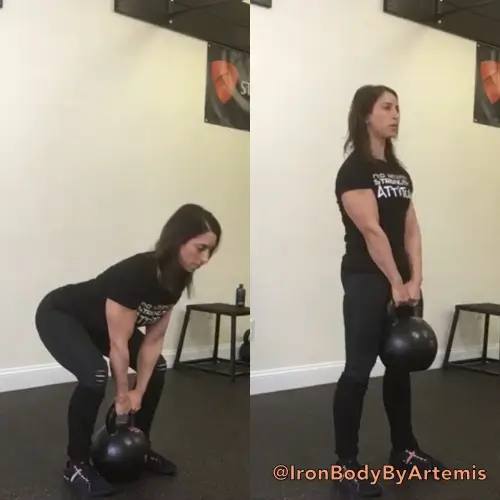

Why: The main benefit of the kettlebell deadlift is that it requires very little equipment and space, which means it’s a good option if you work out at home.
The biggest downside, however, is that even the most well-equipped gyms only have kettlebells up to around 70-to-80 pounds, which limits how far you can progress. That’s why you should only use kettlebell deadlift variations when you don’t have access to a barbell or heavy dumbbells.
How to:
- Place your feet slightly narrower than shoulder-width, with toes pointed out.
- Position a kettlebell between your feet in line with your midfoot.
- Take a deep belly breath, and grip the handle with palms facing you.
- Flatten your back, then drive upward and slightly back by pushing through your heels until upright.
- Reverse the movement and return to the starting position.
14. Kettlebell Suitcase Deadlift
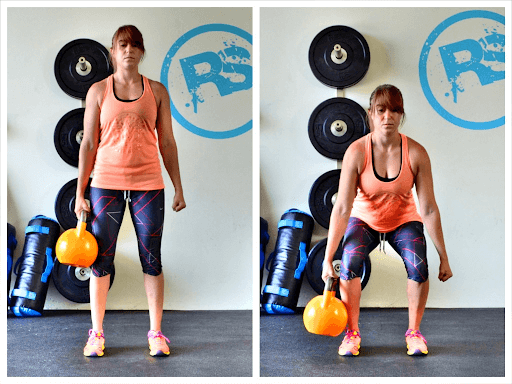

Why: The kettlebell suitcase deadlift is a unique deadlift variation that emphasizes core stability. Since you’re lifting the weight on one side of your body, it forces your obliques and core to work harder to resist rotation, which builds a strong, stable midsection.
This makes it a great exercise for improving balance and “functional” (real-world) strength, especially for activities like carrying groceries or luggage.
Another big advantage of the kettlebell suitcase deadlift is how little equipment you need—you can do it in almost any space with just a single kettlebell. This makes it perfect for home workouts or while traveling.
However, most gyms don’t have very heavy kettlebells, which can limit the load you can use for this exercise. Because of this, the kettlebell suitcase deadlift is more suited to building core stability and balance rather than max strength.
How to:
- Place your feet slightly narrower than shoulder-width, with toes pointed out.
- Position a kettlebell beside your right foot, in line with your midfoot.
- Take a deep belly breath and grip the handle with your right hand, palm facing you.
- Flatten your back, brace your core, and drive upward and slightly back by pushing through your heels until you’re standing upright.
- Reverse the movement and return to the starting position.
- Once you’ve completed the desired reps, switch sides and repeat.
15. Reeves Deadlift
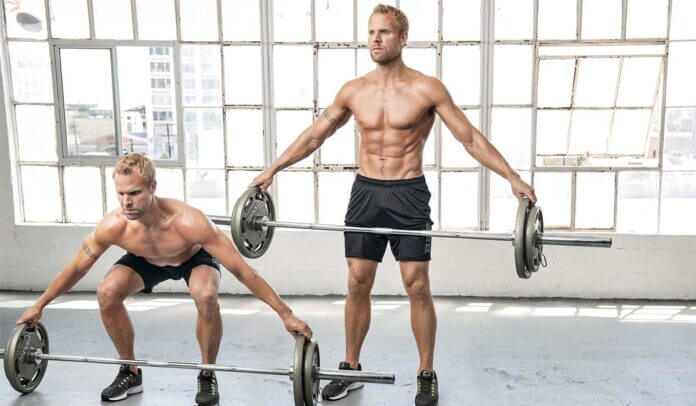

Why: The Reeves deadlift is a unique variation of the conventional deadlift where you hold the weight by the plates instead of the bar, which greatly increases the demand on your grip and upper back strength.
If you want to improve your grip strength and endurance or challenge your upper back stability, the Reeves deadlift can be a solid addition to a deadlift routine. However, since you can’t lift nearly as much weight as you can with more traditional deadlift variations, the Reeves deadlift isn’t the best type of deadlift for gaining overall muscle and strength.
How to:
- Place your feet slightly narrower than shoulder-width, with toes pointed out.
- Position a barbell about an inch from your shins over your midfoot.
- Take a deep belly breath, then pinch the weight plates with your palms facing you.
- Flatten your back, then drive upward and slightly back by pushing through your heels until upright.
- Reverse the movement and return to the starting position.
FAQ #1: Barbell deadlift vs. Dumbbell deadlift: Which is best?
Neither the barbell deadlift nor dumbbell deadlift is better or worse than the other. Which you choose depends on your goals.
The barbell deadlift allows you to lift heavier weights, so it’s ideal for anyone looking to maximize muscle and strength gain. The dumbbell deadlift, on the other hand, requires less equipment and allows you to start lighter, which makes it ideal for beginners or those who like to train at home.
RELATED: The Complete Beginner’s Guide to Weightlifting
FAQ #2: What’s the best deadlift variation for glutes?
All deadlift variations train the glutes to a large degree, so you can choose whichever you enjoy most.
That said, the Romanian deadlift, stiff-leg deadlift, and deficit deadlift train the glutes in a more stretched position than most other types of deadlift, which may benefit growth in some scenarios. And for that reason, it’s worth including at least one of these variations in your program if building your glutes is a top priority.
RELATED: Growing Your Butt: Best Glute-Focused Exercises
FAQ #3: What are single-leg deadlift variations good for?
Single-leg deadlift variations are perfect for addressing muscle imbalances, which can improve overall strength and symmetry. Because they are inherently unstable, they may also enhance athletic performance and train smaller stabilizer muscles—like the glute minimus—more than bilateral deadlift variations (those that train both sides of the body simultaneously).
RELATED: Unilateral vs. Bilateral Exercises: Which Is Better for Muscle Building and Performance?
FAQ #4: How many types of deadlift are there?
There are many deadlift variations, each with its own benefits and purposes. In this article, we’ve covered 15 of the best, but there are many more viable types that involve different equipment (e.g., various deadlift bars or banded deadlifts) and movement patterns (e.g., the Jefferson deadlift or Dorian deadlift).
FAQ #5: What are the best kettlebell deadlift variations?
My favorite kettlebell deadlift variations are the kettlebell deadlift and suitcase deadlift. That said, you can perform any of the deadlifts above with kettlebells instead of a barbell or dumbbells.
Scientific References +
- Nigro, F., & Bartolomei, S. (2020). A Comparison Between the Squat and the Deadlift for Lower Body Strength and Power Training. Journal of Human Kinetics, 73(1), 145. https://doi.org/10.2478/HUKIN-2019-0139
- Thompson, Brennan J, et al. “Barbell Deadlift Training Increases the Rate of Torque Development and Vertical Jump Performance in Novices.” Journal of Strength and Conditioning Research, vol. 29, no. 1, 2015, pp. 1–10, www.ncbi.nlm.nih.gov/pubmed/25226322, https://doi.org/10.1519/JSC.0000000000000691.
- Delvecchio, Luke. “Mini Review J Yoga & Physio the Deadlift -Part 1.” J Yoga & Physio, vol. 5, no. 5, 2018, juniperpublishers.com/jyp/pdf/JYP.MS.ID.555674.pdf, https://doi.org/10.19080/JYP.2018.05.555674. Accessed 12 Nov. 2024.
- Berglund, L., Aasa, B., Hellqvist, J., Michaelson, P., & Aasa, U. (2015). Which Patients with Low Back Pain Benefit from Deadlift Training? Journal of Strength and Conditioning Research, 29(7), 1803–1811. https://doi.org/10.1519/JSC.0000000000000837
- Escamilla, R. F., Francisco, A. C., Fleisig, G. S., Barrentine, S. W., Welch, C. M., Kayes, A. V., Speer, K. P., & Andrews, J. R. (2000). A three-dimensional biomechanical analysis of sumo and conventional style deadlifts. Medicine and Science in Sports and Exercise, 32(7), 1265–1275. https://doi.org/10.1097/00005768-200007000-00013
- ESCAMILLA, R. F., FRANCISCO, A. C., KAYES, A. V., SPEER, K. P., & MOORMAN, C. T. (2002). An electromyographic analysis of sumo and conventional style deadlifts. Medicine and Science in Sports and Exercise, 34(4), 682–688. https://doi.org/10.1097/00005768-200204000-00019
- Cholewicki, J., et al. “Lumbar Spine Loads during the Lifting of Extremely Heavy Weights.” Medicine and Science in Sports and Exercise, vol. 23, no. 10, 1 Oct. 1991, pp. 1179–1186, pubmed.ncbi.nlm.nih.gov/1758295/.
- Swinton, P. A., Stewart, A., Agouris, I., Keogh, J. W. L., & Lloyd, R. (2011). A biomechanical analysis of straight and hexagonal barbell deadlifts using submaximal loads. Journal of Strength and Conditioning Research, 25(7), 2000–2009. https://doi.org/10.1519/JSC.0B013E3181E73F87
- Lake, J., Duncan, F., Jackson, M., & Naworynsky, D. (2017). Effect of a Hexagonal Barbell on the Mechanical Demand of Deadlift Performance. Sports 2017, Vol. 5, Page 82, 5(4), 82. https://doi.org/10.3390/SPORTS5040082
- Lee, S., Schultz, J., Timgren, J., Staelgraeve, K., Miller, M., & Liu, Y. (2018). An electromyographic and kinetic comparison of conventional and Romanian deadlifts. Journal of Exercise Science and Fitness, 16(3), 87–93. https://doi.org/10.1016/J.JESF.2018.08.001
- Boone, T., Board, R., Astorino, T., Baker, J., Brock, S., Dalleck, L., Goulet, E., Gotshall, R., Hutchison, A., Knight-Maloney, M., Kravitz, L., Laskin, J., Lim, Y. A., Lowery, L., Marks, D., Mermier, C., Robergs, R., Vella, C., Wagner, D., … Serrão, J. C. (2013). Journal of Exercise Physiologyonline Volume 16 Number 3 Editor-in-Chief Electromyographic Activity of Lower Body Muscles during the Deadlift and Still-Legged Deadlift.
- Oranchuk, D. J., Storey, A. G., Nelson, A. R., & Cronin, J. B. (2019). Isometric training and long-term adaptations: Effects of muscle length, intensity, and intent: A systematic review. Scandinavian Journal of Medicine & Science in Sports, 29(4), 484–503. https://doi.org/10.1111/SMS.13375
- Kubo, K., Ikebukuro, T., & Yata, H. (2019). Effects of squat training with different depths on lower limb muscle volumes. European Journal of Applied Physiology, 119(9), 1933–1942. https://doi.org/10.1007/S00421-019-04181-Y
- K. Beckham, G., S. Lamont, H., Sato, K., W. Ramsey, M., G., G. H., & H. Stone, M. (2012). Isometric Strength of Powerlifters in Key Positions of the Conventional Deadlift. Journal of Trainology, 1(2), 32–35. https://doi.org/10.17338/TRAINOLOGY.1.2_32
- Kompf, Justin, and Ognjen Arandjelović. “Understanding and Overcoming the Sticking Point in Resistance Exercise.” Sports Medicine, vol. 46, no. 6, 12 Jan. 2016, pp. 751–762, https://doi.org/10.1007/s40279-015-0460-2.
- Bird, S., & Barrington-Higgs, B. (2010). Exploring the deadlift. Strength and Conditioning Journal, 32(2), 46–51. https://doi.org/10.1519/SSC.0B013E3181D59582
- Liao, Kai-Fang , et al. Effects of Unilateral vs. Bilateral Resistance Training Interventions on Measures of Strength, Jump, Linear and Change of Direction Speed: A Systematic Review and Meta-Analysis. 3 July 2021, pp. 2022;39(3):485-497, https://doi.org/10.5114/biolsport.2022.107024.

